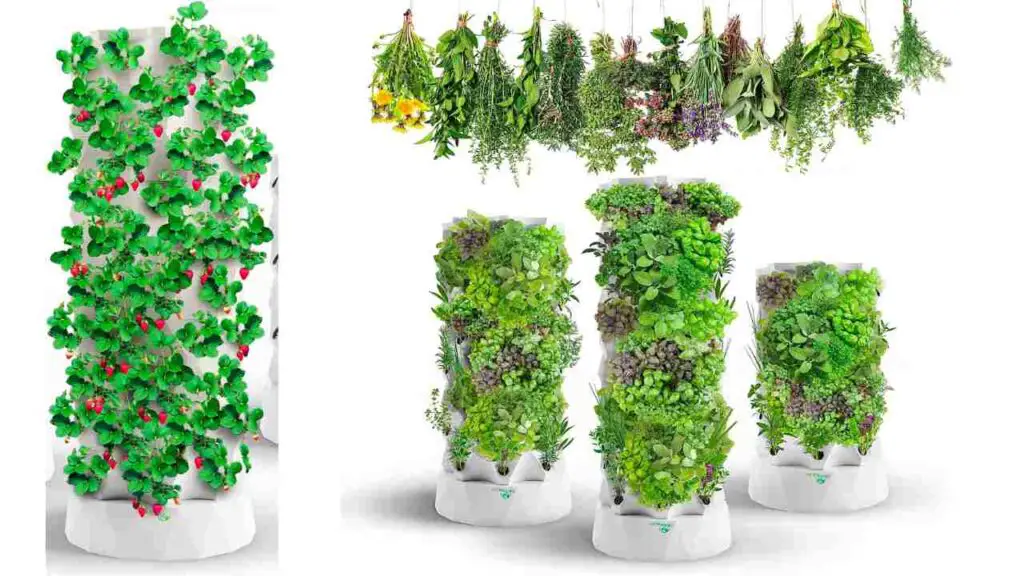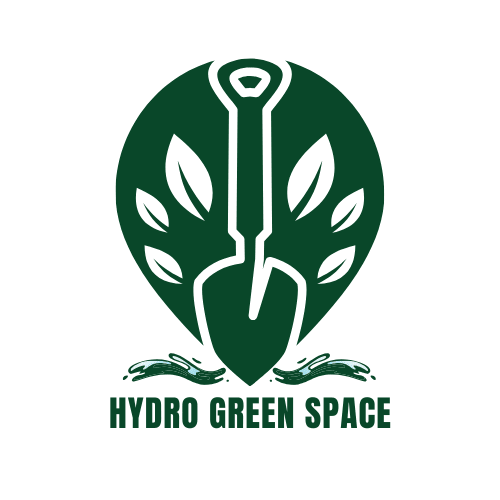Hydroponic Towers 101: How Vertical Hydroponic Systems Work
As an avid hydroponic gardener living in a small urban apartment, I’m constantly looking for ways to maximize my growing space and yields.
After seeing my neighbor’s thriving hydroponic tower garden on their balcony, I knew I had to learn more about these vertical hydroponic systems. I was so impressed by how their compact tower was overflowing with lush greens and herbs using just a couple of square feet of floor space.
Ever since then, I’ve become fascinated by the ingenious design of hydroponic towers and how they create the perfect conditions for plants to thrive with limited room. I wanted to really understand the science behind how the different components like the pump, piping, and reservoir work together in harmony.
I was keen to share this knowledge with others interested in hydroponics but intimidated by the complex equipment.
That’s why in this comprehensive guide, I’ll provide everything you need to know as a beginner about how hydroponic towers function from start to finish – no green thumb required!
We’ll look at what exactly a hydroponic tower is, how the circulation system delivers nutrients to the plants, tips for constructing your own tower or buying a prefabricated one, and the many benefits these vertical gardens provide.
Equipped with a clear understanding of how hydroponic towers work, I hope you’ll feel confident to try out these space-saving wonders and experience their transformative power for yourself. So let’s get growing!

What Exactly is a Hydroponic Tower Garden?
A hydroponic tower garden is a vertical hydroponic system that allows you to grow a high density of plants in a small footprint. While traditional gardening takes place horizontally across land or raised beds, a tower garden stacks the growing beds vertically, saving considerable space.
There are a few key features that define a hydroponic tower garden:
- Vertical columns or towers with multiple growing beds stacked on top of each other
- A reservoir at the base to hold the nutrient-rich water solution
- A submersible pump to circulate the water
- Piping to deliver the water to the top of the tower
- Grow lights attached to each level to provide lighting for the plants
- An adjustable support structure to hold everything in place
Hydroponic towers come in different shapes and sizes. The main types are:
- Freestanding towers – Stand-alone units placed on the floor or a sturdy surface
- Wall-mounted towers – Towers fixed to a wall for support and stability
- Rail-mounted towers – Designed to mount on balcony or deck rails
- Pipeline towers – Fit into a vertical pipe structure
No matter the setup, all hydroponic towers utilize the same system of circulating nutrient solution to the stacked vertical beds and enabling high-density growing in a compact footprint.
Comparative Analysis with Other Hydroponic Systems
When considering a hydroponic garden, it’s important to understand how hydroponic towers stack up against other popular systems. Let’s compare hydroponic towers with Nutrient Film Technique (NFT), Deep Water Culture (DWC), and Ebb and Flow systems in terms of efficiency, cost, and suitability for various plants and spaces.
Hydroponic Towers
- Efficiency: Hydroponic towers are highly efficient in terms of space utilization, making them ideal for small urban areas like balconies or patios. They allow vertical stacking of plants, maximizing growth area vertically.
- Cost: Initial setup costs can vary. DIY towers can be cost-effective, while commercial systems may be pricier. Operating costs are generally moderate.
- Suitability: Best suited for leafy greens and herbs. Larger fruiting plants might require additional support structures.
Nutrient Film Technique (NFT)
- Efficiency: NFT is efficient for growing a large number of plants in a small horizontal space. It continuously circulates a thin film of nutrient solution over the roots, making it effective for nutrient uptake.
- Cost: Moderate to high initial cost due to the need for channels, pumps, and precise control systems. Operating costs are relatively low.
- Suitability: Ideal for plants with smaller root systems like lettuce, herbs, and some strawberries. Not suitable for large, heavy plants.
Deep Water Culture (DWC)
- Efficiency: DWC is highly efficient for root development, as plants are suspended in nutrient-rich water. This leads to rapid growth.
- Cost: Lower initial cost compared to NFT and Ebb and Flow, as it requires fewer moving parts. Operating costs can be higher due to the need for continuous aeration.
- Suitability: Suitable for a wide range of plants, including leafy greens and larger fruiting plants. Root vegetables and tubers are not ideal for DWC.
Ebb and Flow (Flood and Drain)
- Efficiency: This system is efficient for water and nutrient usage, as it periodically floods and drains the grow bed. It’s adaptable to different plant sizes.
- Cost: Initial setup can be moderately expensive due to the need for timers, pumps, and trays. Operating costs are generally low.
- Suitability: Versatile for a variety of plants, including herbs, greens, and larger fruiting plants. Not ideal for plants requiring constant moisture.
Each hydroponic system has its unique advantages and drawbacks. Hydroponic towers are unparalleled in space-saving and are great for leafy greens and herbs.
Your choice will depend on your space, budget, desired plants, and personal preferences. By understanding the strengths and limitations of each system, you can make an informed decision that suits your gardening goals and environment.
How Do The Different Components of a Hydroponic Tower Work?
The key components of a hydroponic tower system work together to create optimal growing conditions for plants:
The Growing Beds
- Located at each level of the tower
- Made of plastic, metal mesh, or other durable material
- Where the plants are anchored in a growing medium like clay pebbles
- Spaced vertically to allow lights to reach each level
The Reservoir
- Located at the base of the tower
- Made of plastic or other non-corrosive material
- Holds the nutrient-rich water solution
- Usually holds 20-50 gallons of solution depending on tower size
- Covered to prevent light gets in and algae growth
The Submersible Pump
- Placed inside the reservoir
- It pumps the nutrient solution to the top of the tower
- Different pump capacities measured in L/hr or GPH
- A timer controls the duration and frequency of pumping
The Piping
- Connects the pump outlet to the growing beds
- Delivers nutrient solution to top bed first
- Gravity flows the solution down through lower beds back to the reservoir
- Usually 1/2″ to 1″ diameter PVC, vinyl, or poly tubing
The Timer
- Automates the pump to control flood cycles
- Can be simple analog or digital programmable
- Sets intervals for solution pumping and draining
- Prevents oversaturating beds between cycles
Airstones
- Placed in a reservoir to oxygenate the nutrient solution
- Create water circulation and airflow for healthy roots
- Connect to the air pump or blower to run continuously
Plants Suited to Hydroponic Tower Gardens
One of the great advantages of hydroponic towers is their versatility in the types of plants you can grow. Here are some top options:
Leafy Greens
- Lettuce varieties – Romaine, red leaf, green leaf
- Spinach
- Kale
- Chard
- Arugula
Herbs
- Basil
- Oregano
- Thyme
- Rosemary
- Mint
Vegetables
- Tomatoes
- Peppers
- Cucumbers
- Beans
- Peas
Fruiting Plants
- Strawberries
- Dwarf fruit trees – lemon, lime, apple
- Melons
Flowers
- Petunias
- Marigolds
- Sunflowers
- Zinnias
Other factors that determine plant compatibility include:
- Sunlight needs – Leafy greens do well in low light, fruiting plants need more intense light
- Growth time – Quick harvesting leafy greens vs longer-growing vegetables
- Space needs – Loose leafy greens vs vines that require trellising
The vertical nature of towers allows creating zones for plants with different needs. With some planning, you can grow a vibrant, productive tower garden.
Getting Started with Your Own DIY Hydroponic Tower
Constructing your own custom hydroponic tower can be a fun and rewarding DIY project. Here’s a comprehensive guide to designing and maintaining your system:
Choosing Tower Materials and Setup
- Dimensions – Consider height and diameter. Standard towers are 3-5 feet tall with 8-12 inch diameter.
- Material for structure – PVC pipes, wood, metal poles, plastic containers
- Growing beds – Use plastic containers, cubbies, or mesh baskets
- For freestanding – Ensure a heavy, stable base like a 5-gallon bucket
- For wall-mounted – Use sturdy brackets and anchors
- For rail-mounted – Get U-bolts to securely attach to balcony railings
Growing Media, Lighting and Nutrients
- Growing media – Use expanded clay pellets, perlite, coconut coir
- Lighting – LED full spectrum grow lights, clamp lights, grow bulbs
- Nutrients – Start with a commercial 2-part hydroponic nutrient kit
- pH and EC meters – Monitor pH 5.5-6.5 and EC 1.2-2.0
Plant Selection and Spacing
- Choose quick-growing greens for starting out
- Space plants 6-12 inches apart depending on a variety
- Start seeds or propagate cuttings in seed starter cubes
- Rearrange plants as they grow to optimize space
Maintenance
- Check pH and nutrient levels weekly
- Top off reservoir with fresh nutrient solution
- Flush beds and change solution monthly
- Prune and harvest plants regularly for optimal growth
- Disinfect system between crop cycles
- Use beneficial bacteria and enzymes to prevent root issues
DIY Tower Design Ideas
- 5-gallon bucket towers for patios and decks
- Wall-mounted towers with PVC pipe frames
- Corner mounted towers to optimize angles
- Vertical pipe systems for narrow spaces
For simplified setup, you can purchase prefabricated towers with modular parts. But designing your own system allows customization and mastery of the fundamentals.
After reading this beginner’s guide, you should now have a clear understanding of what hydroponic towers are and how their circulation systems work to nourish plants. I have covered the key components like the growing beds, reservoir, pump, and piping that work in unison to deliver nutrients without soil. You also learned some tips to design and maintain your own small-scale DIY tower using readily available materials.
The benefits of growing vertically with hydroponic towers are immense. You can maximize yields and grow a high density of crops in limited space. These compact systems are perfect for urban balconies, patios, and interiors with minimal square footage. And they provide a fun, hands-on gardening experience.
I hope this comprehensive overview dispelled any intimidation you may have felt about hydroponic towers. The working principles are quite straightforward once you grasp the basics. With so many creative ways to construct compact towers, there’s huge potential to develop your own custom vertical garden.
I’d love to hear about your experiences with hydroponic towers! Feel free to ask me any other questions. And please share photos of the towers you create – I’m always looking for inspiration to improve my own small-space hydroponic garden.
Let’s keep growing together!
